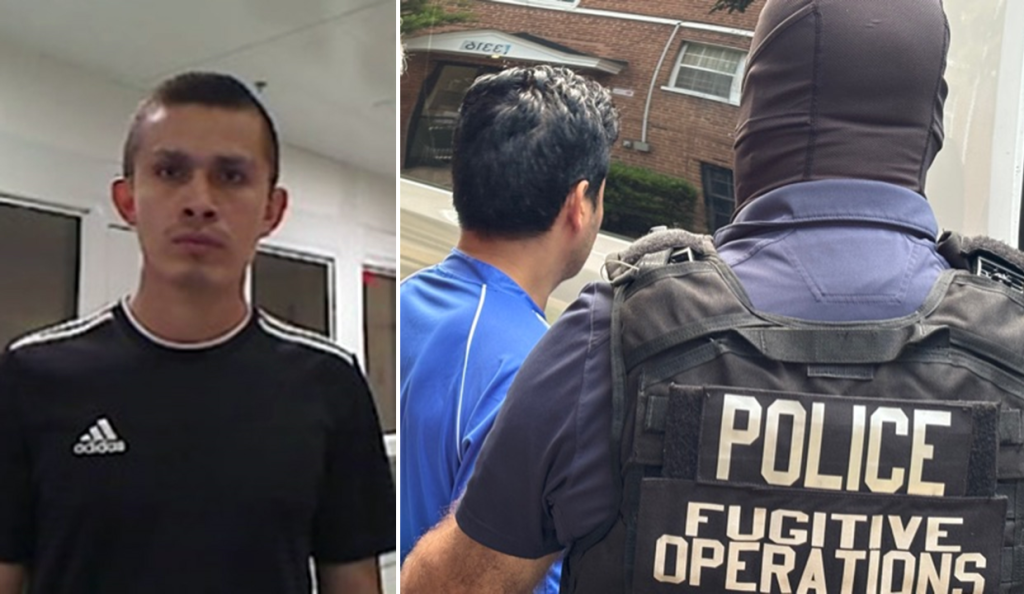Last week, federal immigration authorities executed a significant operation in Washington, D.C., resulting in the arrests of nearly 200 individuals, many of whom were associated with criminal activity. The operation, which took place from May 6 to May 9, specifically targeted criminal alien offenders, including known members of transnational gangs such as MS-13 and 18th Street. This increased enforcement effort has been met with both support from law enforcement and criticism from local officials.
| Article Subheadings |
|---|
| 1) Overview of the Operation |
| 2) Details of Arrests Made |
| 3) Law Enforcement Collaboration |
| 4) Reactions from Officials |
| 5) Community Impacts and Concerns |
Overview of the Operation
The recent operation conducted by federal immigration agencies aimed to enhance public safety by targeting individuals who posed significant threats to communities in Washington, D.C. This four-day operation ran from May 6 to May 9 and reportedly focused on apprehending individuals with ties to violent criminal organizations operating within and around the city’s borders. The enforcement activities were part of a broader strategy by authorities to address crime rates and public safety concerns stemming from illegal immigration.
According to ICE officials, this mission was driven by a commitment to prioritize the safety of law-abiding citizens. The enforcement actions were largely concentrated in neighborhoods identified as high-crime areas, where criminal activities linked to undocumented immigrants have led to community unrest. Officials argued that such operations were necessary to restore order and decrease crime rates.
Details of Arrests Made
During the operation, a total of 189 individuals were arrested. This included a range of undocumented immigrants found to have extensive criminal histories. Authorities revealed that they executed 187 notices of inspection at various local businesses to ensure compliance with employment laws and verify the immigration status of employees.
Among those apprehended, notable cases emerged, such as that of a 30-year-old Salvadoran man with a criminal record including simple assault, DUI, and unauthorized use of a vehicle. Another significant arrest involved a 47-year-old Guatemalan immigrant who had previously been convicted of drug possession and sexual assault. These arrests exemplified the operation’s focus on prioritizing individuals considered to be dangerous offenders.
Law Enforcement Collaboration
This operation marked a notable collaboration between ICE and various law enforcement partners, showcasing a unified front against crime. The operation involved cooperation with several agencies, including the U.S. Attorney’s Office for the District of Columbia, the FBI, the ATF, the DEA, and the U.S. Marshals Service, among others.
Such partnerships point to a coordinated effort to tackle transnational criminal organizations and provide a comprehensive approach to law enforcement. ICE officials emphasized that many arrests occurred after local jurisdictions had previously released the offenders, indicating a failure to uphold federal immigration detainers. This operation, therefore, served as a critical response to local law enforcement’s perceived shortcomings.
Reactions from Officials
Opinions surrounding the operation have divided public sentiment. On one end, the Interim U.S. Attorney for the District of Columbia, Ed Martin, expressed strong approval of the arrests, stating that they marked a pivotal step in enhancing safety for law-abiding citizens. He hailed the operation as a demonstration of the administration’s commitment to enforcing immigration laws vigorously.
Conversely, local officials such as D.C. Mayor Muriel Bowser voiced concern over the operation’s approach, suggesting that it disrupted communities and negatively impacted legal residents. The mayor remarked, “It doesn’t look like they’re targeting criminals, and it does look like they’re disrupting.” Critics of the operation have raised alarms about the potentially widespread effects on immigrant communities, raising questions about its effectiveness and approach.
Community Impacts and Concerns
The ramifications of this operation extend beyond arrests, impacting the broader community in Washington, D.C. Residents in areas where the operation unfolded reported feelings of unease and fear as federal agents conducted inspections in local businesses and neighborhoods. Many voiced concerns that such operations foster an atmosphere of mistrust among community members, regardless of their immigration status.
Furthermore, local business owners expressed anxiety regarding potential impacts on their operations and employee morale. The I-9 verification process implemented during the operation has raised questions about long-term effects on employment within vulnerable communities. Activists warn that relentless focus on undocumented immigrants can harm community relations, making it crucial for local governments to navigate these complex challenges carefully.
| No. | Key Points |
|---|---|
| 1 | Nearly 200 arrests made during a 4-day operation targeting criminal alien offenders. |
| 2 | Collaboration involved multiple law enforcement agencies for comprehensive enforcement. |
| 3 | Criticism regarding potential disruption to local communities and immigrant rights. |
| 4 | Statements from officials demonstrated a divide in public opinion on immigration enforcement. |
| 5 | Concerns about the long-term impacts on community relations and local businesses. |
Summary
The recent ICE operation in Washington, D.C., has underscored the ongoing tensions surrounding immigration enforcement in the United States. While law enforcement officials argue that such operations are essential for public safety, concerns about their impact on communities persist. The divided opinions from community leaders and law enforcement highlight a critical dialogue about how best to balance safety with fair treatment for all residents, regardless of their immigration status.
Frequently Asked Questions
Question: What triggered the ICE operation in Washington, D.C.?
The operation was initiated to target criminal alien offenders, particularly those affiliated with transnational gangs, to enhance public safety in high-crime areas.
Question: How many individuals were arrested during the operation?
A total of 189 individuals were arrested over the four-day operation, most of whom had prior criminal records.
Question: What are the local officials’ responses to the operation?
Local officials, including D.C. Mayor Muriel Bowser, expressed concerns about the operation, suggesting that it disrupted communities and could harm legal residents living in the area.
